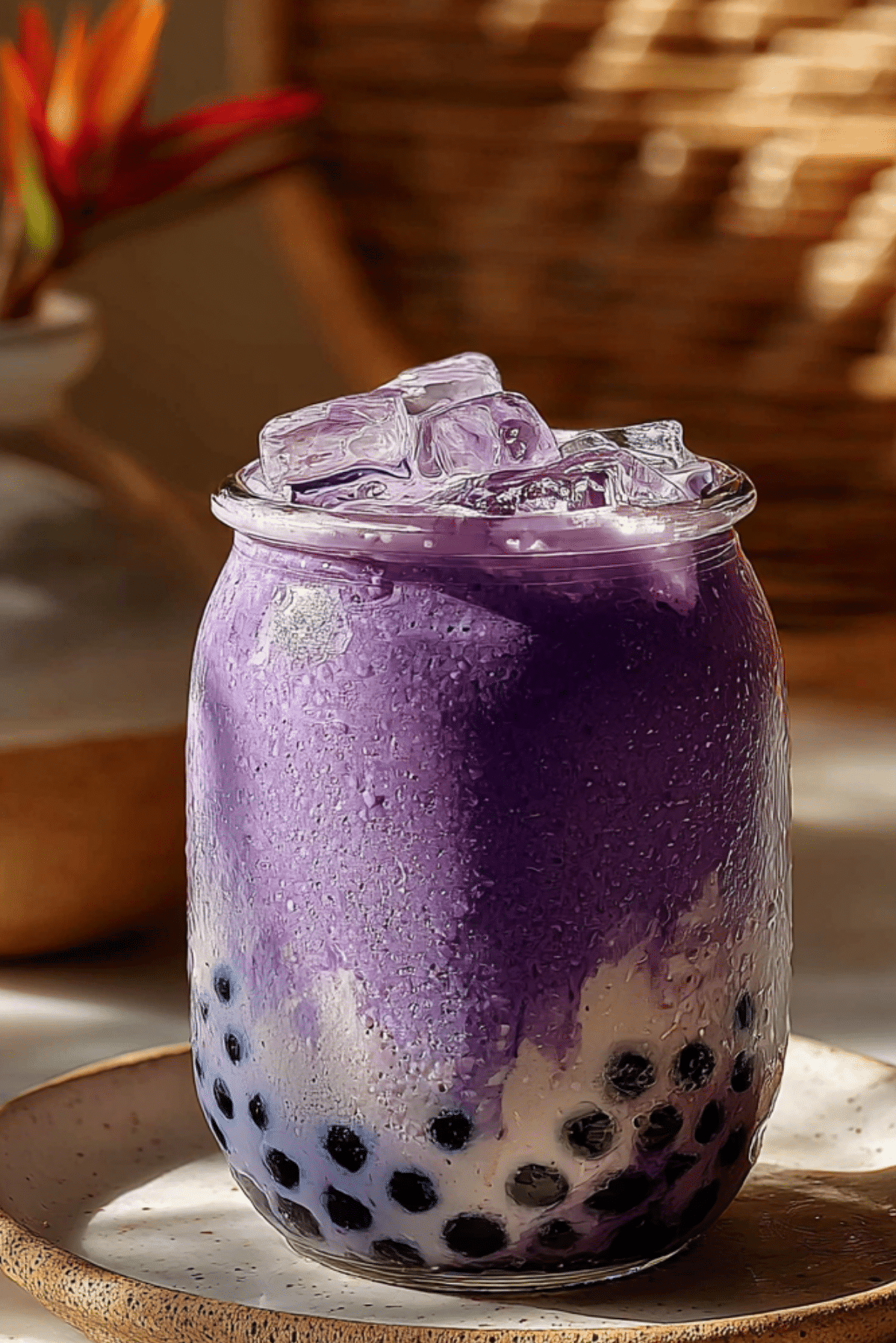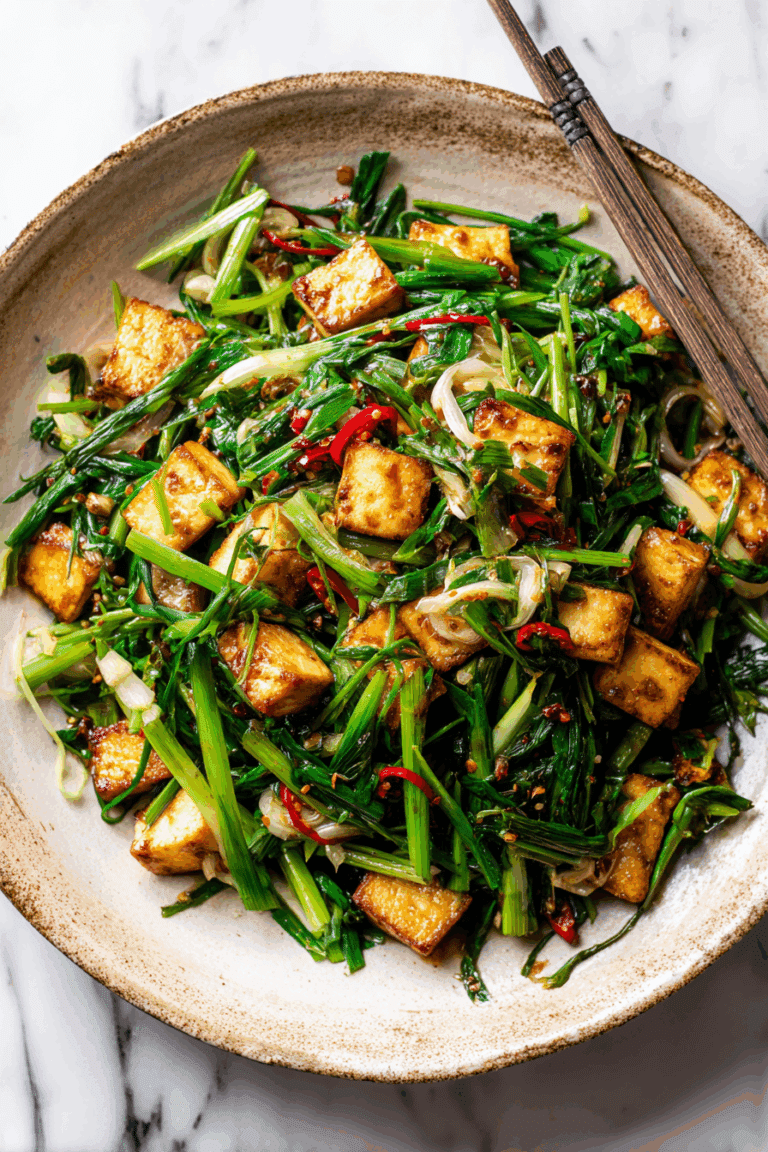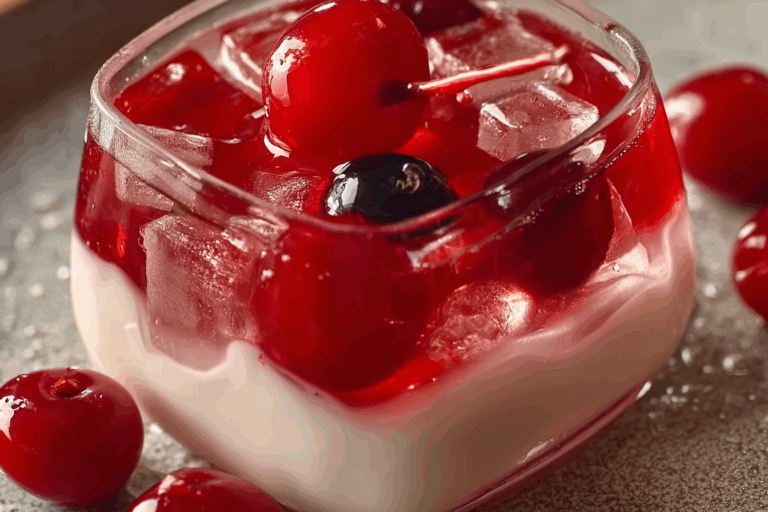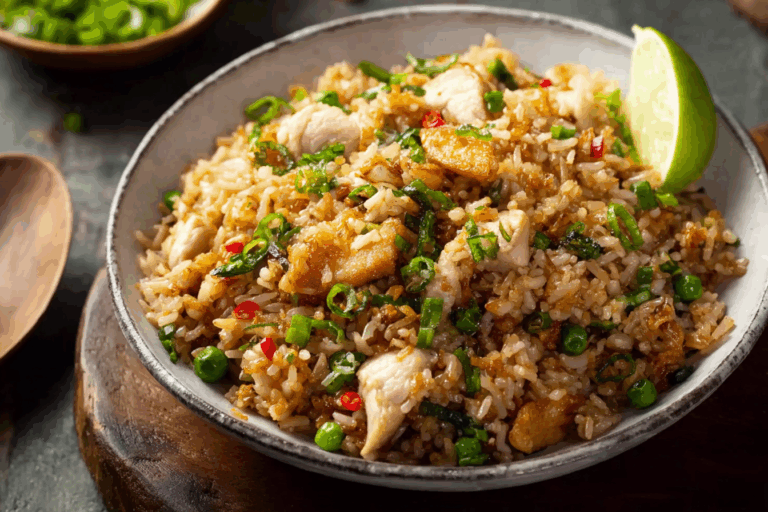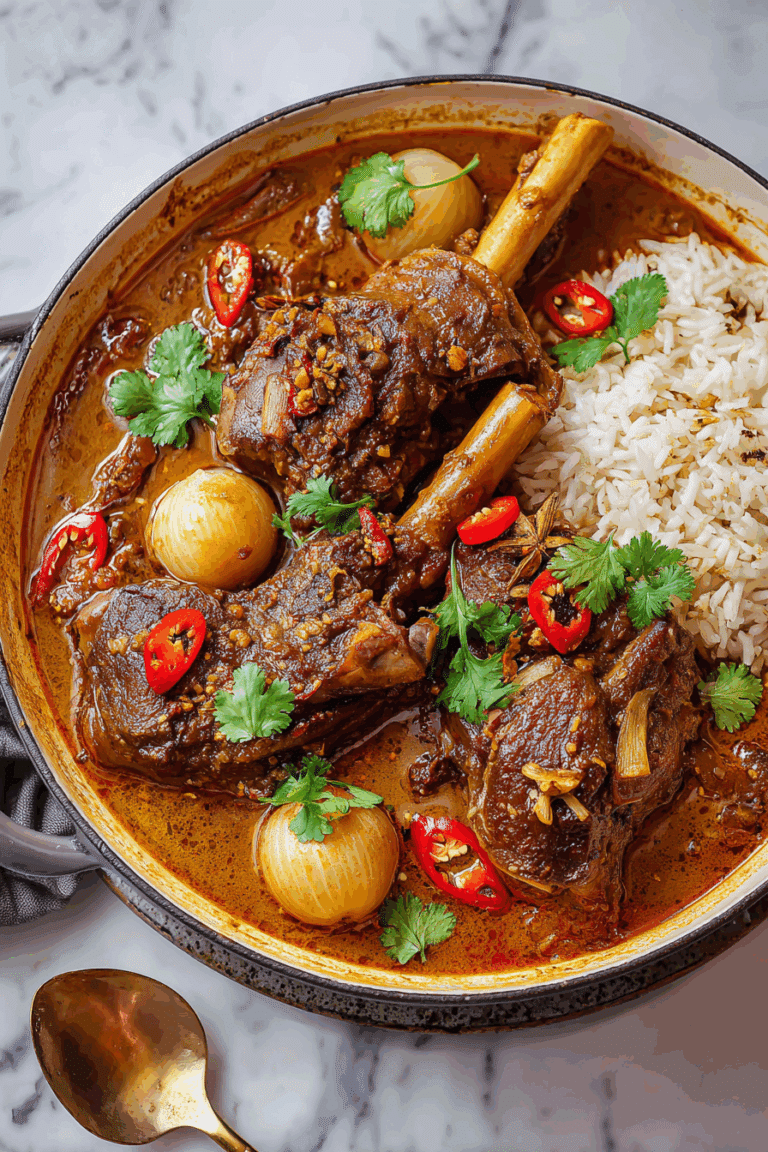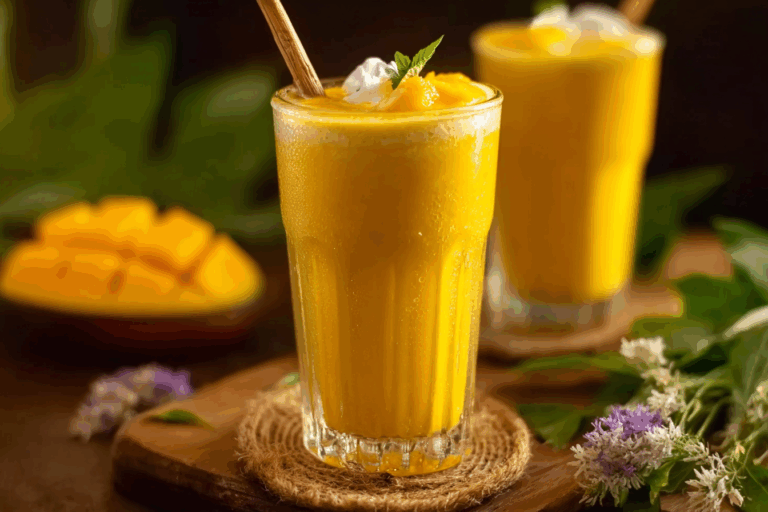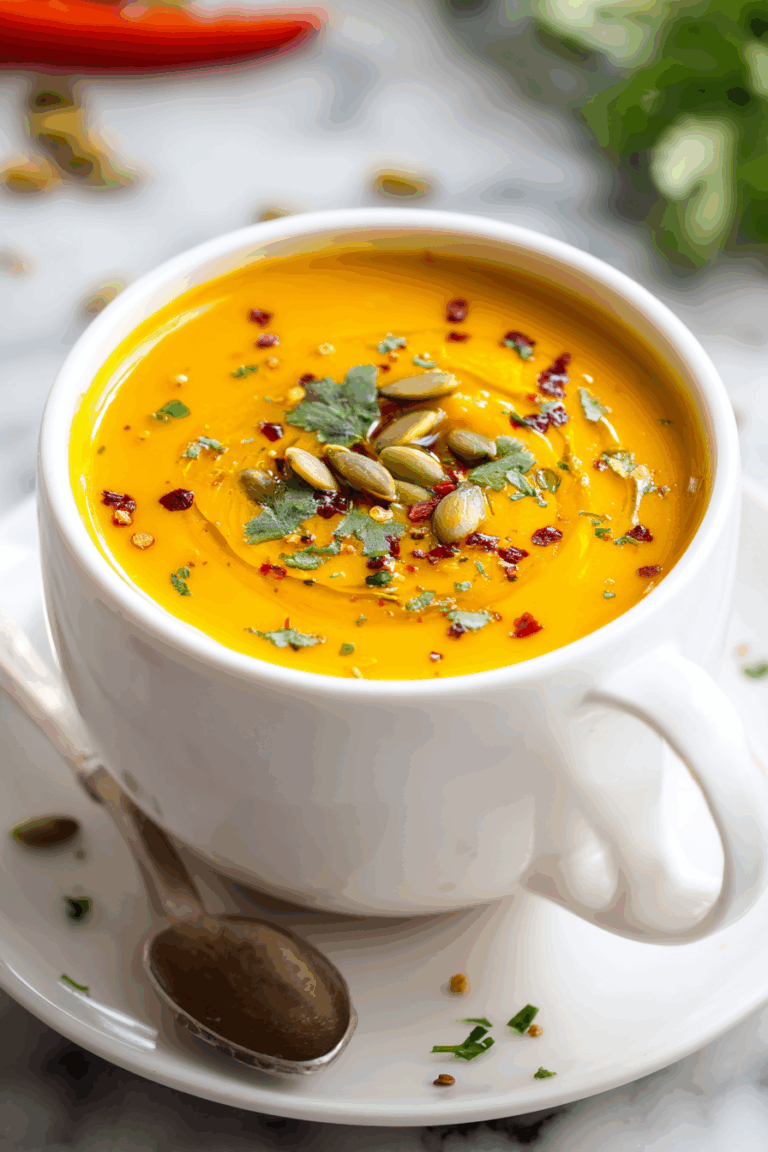How to Make Taro Milk Tea Boba That Tastes Incredible
Taro Milk Tea Boba is more than just a trendy drink on social media, it’s a creamy, dreamy cup that brings comfort, sweetness, and a touch of magic to every sip. At Just Thai Recipes, we first discovered the beauty of Taro Milk Tea Boba while exploring the colorful night markets of Bangkok, where the aroma of cooked tapioca pearls filled the air and the vibrant purple hue of taro caught everyone’s attention. That moment was the spark behind our passion for recreating authentic Thai-inspired drinks in American kitchens, one delicious cup at a time.
If you’ve ever scrolled through our About Page, you already know our story began with a love for home-cooked flavors and the excitement of sharing them with others. Our founder grew up surrounded by the sweet scent of coconut, pandan, and taro simmering on the stove, and those memories inspired this very recipe. At Just Thai Recipes, we believe food tells stories, and this taro milk tea boba recipe tells one about comfort, nostalgia, and joy.
In this guide, you’ll learn everything from the perfect taro powder ratio to how to cook those chewy tapioca pearls just right. You’ll also understand why taro milk tea boba has become a global favorite, known for its rich texture and gentle sweetness. By the end, you’ll be able to make your own taro milk tea boba at home that’s every bit as satisfying as the ones you find in your favorite boba shop.
Taro Milk Tea Boba is one of those drinks that looks impressive but is actually simple once you understand the process. The secret lies in balancing the flavor of the taro powder, the creaminess of the milk, and the chewiness of the pearls. This guide will help you do exactly that, with detailed instructions and tips that anyone can follow, even if it’s your first time making bubble tea at home.
Table of Contents
Table of Contents
Ingredients
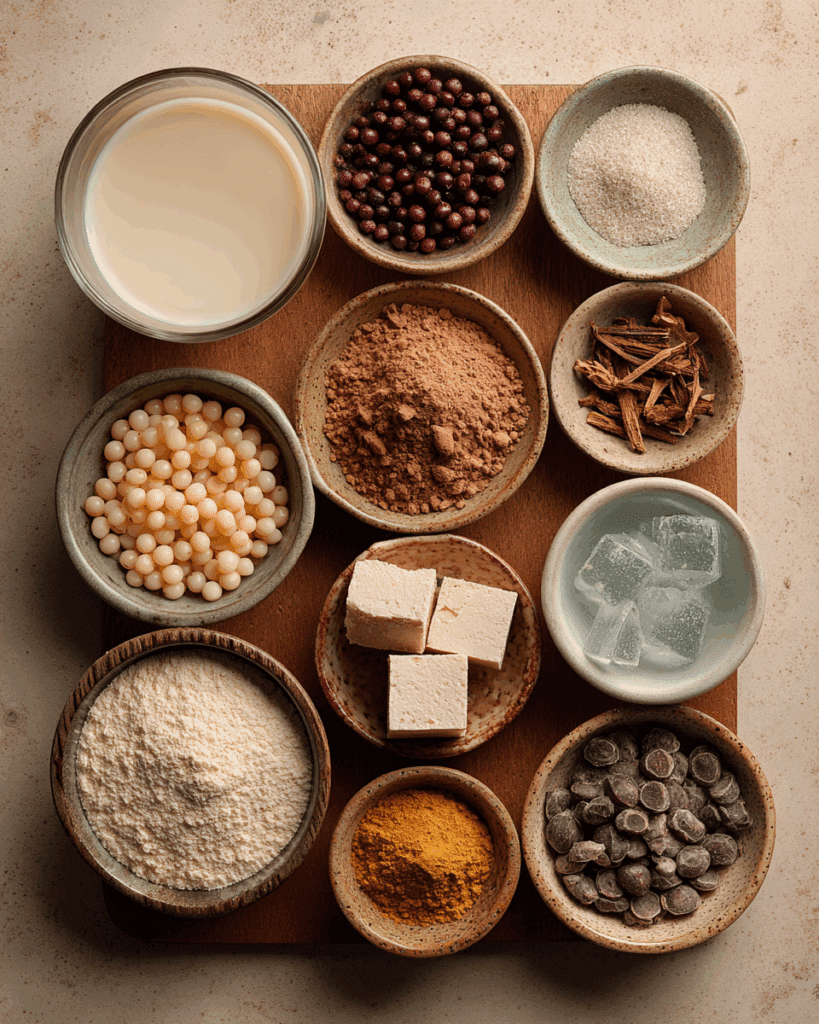
Before we start making Taro Milk Tea Boba, let’s go over everything you’ll need. Having your ingredients ready helps make the process smoother and ensures you achieve the perfect flavor and texture.
For the Boba Drink
- 70 ml warm water, around 120–140°F (50–60°C), not boiling
- 12 g taro powder (you can find this at most Asian grocery stores or online)
- 20 ml sweetened condensed milk
- 12 g natural cane sugar
- 80 ml fresh milk (whole milk is best for creaminess, but oat or almond milk also works)
- Ice, as needed, crushed or cubes
For Cooking Tapioca Pearls
- 60 g uncooked tapioca pearls
- 1 liter water
- 25 g natural cane sugar
If you want to make your Taro Milk Tea Boba truly special, choose high-quality taro powder. Look for brands that use real taro root instead of just flavoring. The natural root gives the drink its signature nutty sweetness and creamy purple color. Using fresh milk also makes a huge difference because it adds depth and richness that blends beautifully with the taro flavor.
Another small but important detail is the temperature of your water. Warm water helps dissolve the taro powder smoothly, preventing clumps and creating a consistent texture. Using natural cane sugar instead of white sugar brings a mild caramel note that enhances the taro flavor naturally.
When making Taro Milk Tea Boba, ice also matters. Crushed ice creates a lighter, refreshing texture, while larger cubes melt slower and keep your drink creamy longer. For the best experience, prepare your ingredients in small bowls before assembling your drink. That way, the process feels like a calm and enjoyable ritual instead of a rush.
Step-by-Step Instructions
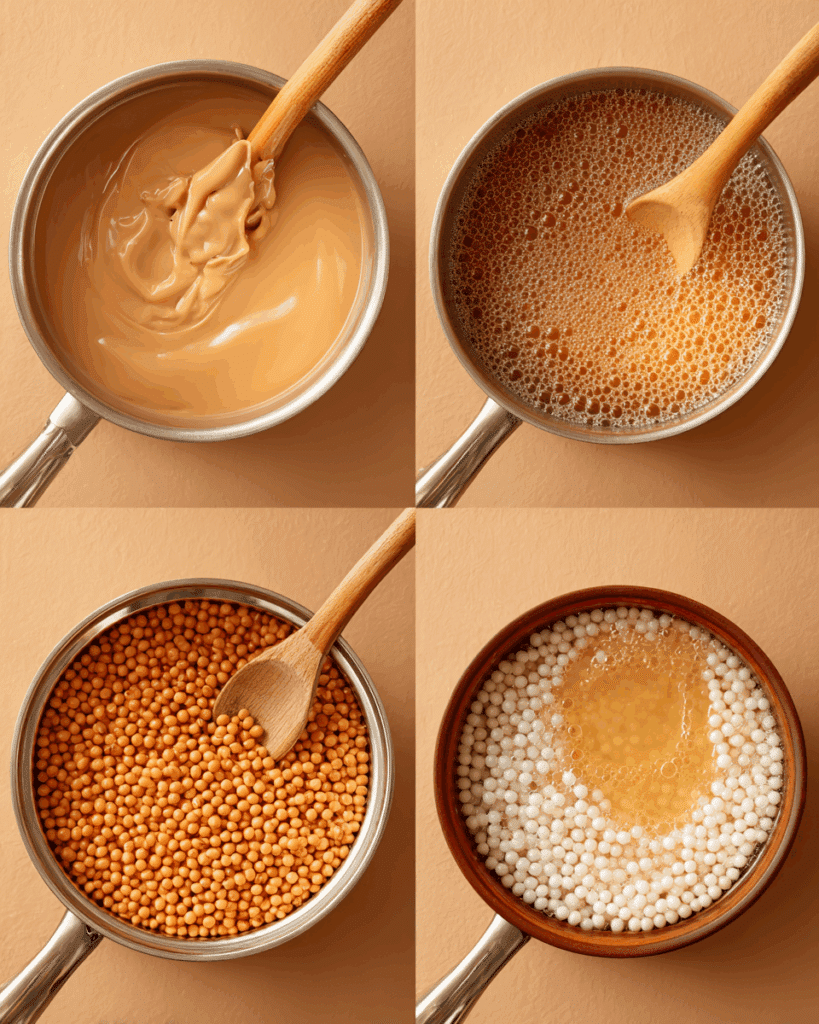
Making Taro Milk Tea Boba at home is easier than you might think. Follow these steps carefully, and you’ll have a creamy, flavorful drink that looks and tastes just like your favorite bubble tea shop version.
Step 1: Cook the Tapioca Pearls
Bring one liter of water to a rolling boil over high heat. Slowly add the uncooked tapioca pearls, stirring gently so they don’t clump together. Once the pearls start floating, reduce the heat to medium and cook for 20 to 30 minutes, or as instructed on the package. Stir occasionally, especially near the end, to prevent sticking.
Once they’re cooked, turn off the heat, cover the pot, and let the pearls sit in the hot water for another 30 minutes. This helps them become perfectly soft and chewy. Drain the pearls using a strainer, then rinse under cold water to stop the cooking process. Transfer them to a bowl, add natural cane sugar, and mix well. This coats the pearls and keeps them from sticking while adding a pleasant sweetness.
If you’d like to see how the professionals do it, check out helpful guides like Broke Bank Vegan’s Taro Milk Tea Recipe or Alpha Foodie’s Taro Milk Tea Tutorial. Both sources offer great visuals and extra ideas for customizing your drink.
Step 2: Prepare the Taro Drink
In a large mixing bowl or glass, dissolve the taro powder in warm water. Stir until smooth and free of clumps. Add the natural cane sugar, condensed milk, and fresh milk. Continue stirring until everything is fully combined. The mixture should be light purple with a silky consistency and a gentle, nutty aroma.
Step 3: Assemble the Drink
Fill a tall glass with ice, either crushed or cubed, then pour in your taro milk mixture. Add the cooked tapioca pearls on top, using a spoon to layer them beautifully at the bottom or let them float for a fun visual effect. Stir lightly and serve immediately with a wide straw so you can enjoy the chewy pearls and creamy drink together.
Making your own Taro Milk Tea Boba gives you the freedom to adjust the sweetness, milkiness, and even the type of milk you prefer. You can also experiment with different tea bases or flavor additions like vanilla or coconut cream for a twist. Every sip of this homemade version feels both familiar and fresh, a delicious reward for your effort.
Tips & Tricks
Making Taro Milk Tea Boba at home is simple once you get the hang of it, but a few little tricks can help you make it perfect every single time. The secret to great Taro Milk Tea Boba is all about balance, temperature, and patience. If you rush the pearls or add ingredients in the wrong order, your drink might end up too thick or too watery. But with a few expert tips, you can create that ideal creamy consistency and chewy texture that makes Taro Milk Tea Boba so loved around the world.
One of the first tips is to always use warm water for your taro mixture, not hot and not cold. Warm water helps dissolve the taro powder completely which prevents lumps and gives your drink that silky, velvety finish that defines a good Taro Milk Tea Boba. Using hot water can cause the milk to curdle slightly, especially if you are using dairy milk. Cold water, on the other hand, makes it harder for the powder to dissolve properly, leaving small clumps that affect both taste and texture. So, warm water is the sweet spot.
Another important trick is to soak your tapioca pearls after boiling. Many people forget this step, but it is crucial for getting that perfect chewiness. Once you turn off the heat, let the pearls rest in the hot water for at least 30 minutes. This resting time allows them to absorb some of the heat and moisture evenly which helps the center cook through without turning mushy. After soaking, always rinse your pearls under cold water to stop the cooking process and then coat them with a bit of sugar or syrup to keep them from sticking together.
For those who love experimenting, try adjusting the ratio of taro powder to milk. More taro powder will give you a stronger, nuttier flavor and a deeper purple color. More milk, on the other hand, makes the drink creamier and lighter. Finding the perfect balance for your taste is part of the fun of making Taro Milk Tea Boba at home.
The sweetness level can also be customized easily. If you prefer a lighter drink, reduce the amount of condensed milk or sugar slightly. For an extra indulgent version, add a bit of vanilla extract or coconut cream to your taro mix. The coconut complements the nutty taste of taro beautifully, giving your Taro Milk Tea Boba a tropical twist that feels comforting and luxurious at the same time.
If you want your Taro Milk Tea Boba to stay cold longer, chill your glass in the refrigerator for about 10 minutes before assembling the drink. This little step helps the ice last longer, so your drink doesn’t get diluted too quickly. Another small but handy trick is to shake your finished drink in a sealed cup or jar for about 10 seconds before serving. This creates a frothy, café-style texture that makes each sip even more enjoyable.
Variations
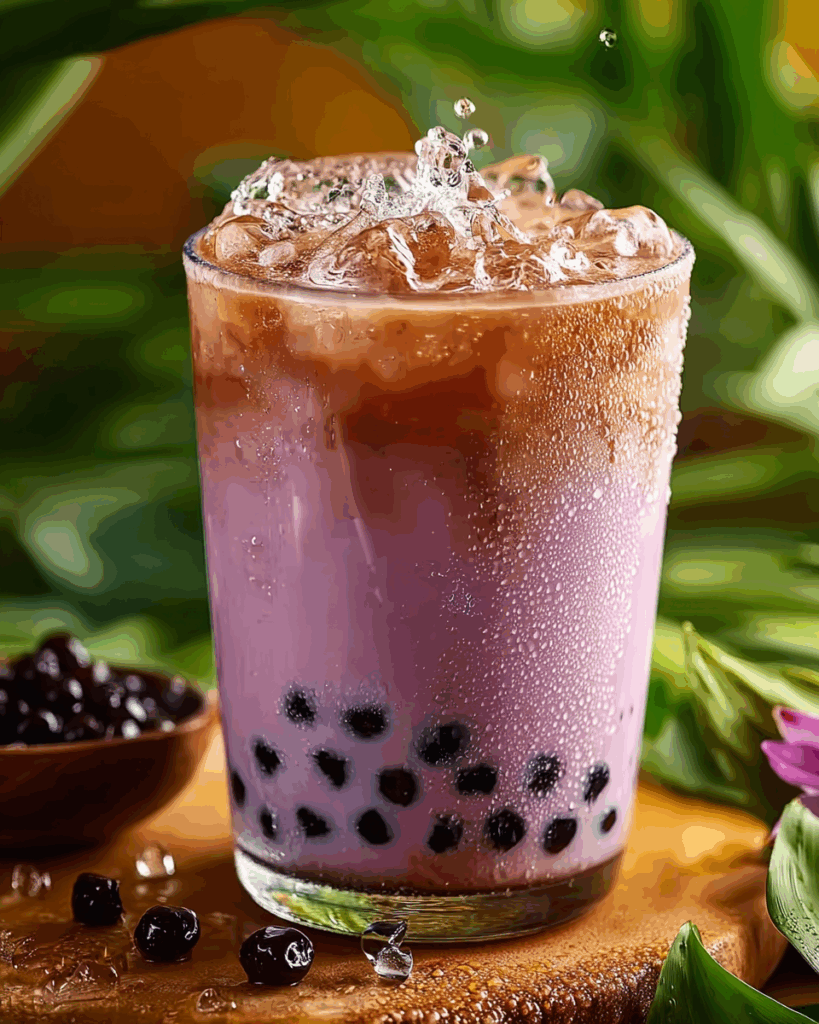
Taro Milk Tea Boba is incredibly versatile, which is why it’s loved by people of all ages. Once you’ve mastered the classic version, you can play around with the ingredients and textures to make new and exciting variations. Each one brings out a different personality of the taro flavor, from creamy to earthy to subtly sweet.
1. Fresh Taro Milk Tea Boba
Instead of using taro powder, try making your Taro Milk Tea Boba with fresh taro root. Peel and steam the taro until soft, then blend it with warm milk and sugar until smooth. This version has a more natural taste with earthy notes and a thicker texture. Fresh taro milk tea boba feels richer and more homemade, and it is a favorite among people who prefer authentic, less processed ingredients.
2. Iced Taro Milk Tea Boba Latte
This is for those who love their drinks extra creamy and cool. To make an iced latte version, simply use double the amount of milk and add a shot of brewed black tea for extra depth. The tea balances out the sweetness and gives the taro flavor a mature twist. You can also drizzle a little condensed milk on top before serving to make it even more decadent. This version of Taro Milk Tea Boba is perfect for summer days when you want something both refreshing and indulgent.
3. Matcha Taro Milk Tea Boba
If you like matcha, you will love combining it with taro. The earthy bitterness of matcha and the sweet nuttiness of taro complement each other beautifully. To make this version, prepare your regular taro milk mix, then layer it in the glass with a bit of matcha milk tea. The visual contrast of green and purple is stunning, and the flavor combination is unforgettable. Many people say this is one of the most unique variations of Taro Milk Tea Boba they have ever tried.
4. Coconut Taro Milk Tea Boba
Another delicious version is to replace part of the milk with coconut milk. Coconut brings a soft sweetness and tropical aroma that enhances the taro flavor naturally. This combination is especially popular in Southeast Asia where both taro and coconut are common dessert ingredients. A sip of coconut taro milk tea boba feels like a mini vacation in a glass, comforting and exotic at the same time.
5. Hot Taro Milk Tea Boba
Although we usually think of bubble tea as a cold drink, Taro Milk Tea Boba also tastes amazing when served warm. Perfect for winter evenings, this version uses the same recipe but skips the ice. Warm taro milk tea boba feels cozy and smooth, and it’s a lovely way to enjoy the flavor without the chill.
Nutrition & Health Benefits
Many people wonder whether Taro Milk Tea Boba can be part of a healthy lifestyle. The answer is yes, if you enjoy it in moderation and use the right ingredients. The base of taro milk tea boba is made from taro, milk, and tapioca pearls, each of which has unique nutritional benefits when prepared thoughtfully.
Taro itself is a root vegetable that is rich in fiber, potassium, and antioxidants. It contains resistant starch which supports digestion and helps maintain steady energy levels. The natural sweetness of taro means you can often use less added sugar without sacrificing flavor. This makes Taro Milk Tea Boba a better choice than many artificially flavored drinks. Taro also contains vitamins like E and C which are good for skin health and immune support.
The milk used in Taro Milk Tea Boba provides calcium and protein which are essential for strong bones and muscle repair. For a lighter option, you can use almond, oat, or soy milk. These plant-based milks not only lower the calorie count but also make the drink suitable for lactose-intolerant or vegan individuals. If you choose condensed milk, just remember that a small amount goes a long way in sweetness and texture.
Tapioca pearls, while not highly nutritious, add a fun chewy texture that makes Taro Milk Tea Boba enjoyable and satisfying. They are mainly made of carbohydrates which can give you a quick energy boost, especially when enjoyed after a meal or as an afternoon pick-me-up. For a slightly healthier option, you can find tapioca pearls made with less refined sugars or even brown sugar versions which offer a deeper flavor and small trace minerals.
Another benefit of making Taro Milk Tea Boba at home is that you can control the sugar content. Store-bought bubble teas often contain more sugar than necessary, but when you make it yourself, you can decide exactly how sweet you want it. That makes it easier to fit Taro Milk Tea Boba into a balanced diet without feeling guilty.
Overall, Taro Milk Tea Boba can be a delightful treat that nourishes both body and soul when enjoyed responsibly. The creamy milk, fragrant taro, and chewy pearls create a satisfying experience that not only tastes delicious but also provides comfort and a moment of calm in your busy day. It is not just a drink, it is an experience that reminds you to slow down and savor life’s small pleasures.
Make-Ahead, Storage & Freezing
One of the best things about making bubble tea at home is that you can prepare parts of it ahead of time. When you plan properly, you can have your favorite drink ready in minutes whenever the craving strikes. The drink has a few components that can be stored separately and combined later for a fresh, café-style experience right in your own kitchen.
Let’s start with the pearls. Once cooked, tapioca pearls can be stored for a few hours, but they are best when enjoyed fresh. If you know you’ll be drinking your tea later in the day, coat the pearls with sugar syrup or honey to help them stay soft and prevent them from sticking together. Keep them at room temperature in a covered container for up to four hours. After that, they start to lose their chewy texture and become harder, which changes the overall experience.
If you want to prepare your drink for the next day, it’s better to make the taro milk mixture separately and refrigerate it in a sealed jar or bottle. This mixture can last up to three days in the fridge, and it actually tastes better the next day because the flavors have more time to blend. When you’re ready to serve, just shake the jar, pour it over ice, and add freshly cooked pearls.
Freezing the pearls isn’t ideal, as it can make them rubbery when thawed. However, you can freeze the taro milk mixture without any problem. Pour it into a freezer-safe container, leaving a little space at the top for expansion, and it will last up to a month. When you’re ready to use it, thaw it overnight in the refrigerator, then stir well or blend it to bring back its creamy texture.
If you love making drinks for family or guests, preparing in batches is a smart idea. You can double or triple the recipe, store the milk mixture in the fridge, and just cook fresh pearls when needed. This makes it easy to serve beautiful drinks without much effort, especially during summer gatherings or small parties. Homemade bubble tea always impresses guests, not just for its taste but also for the colorful, playful look of the pearls dancing in the glass.
For the best experience, try to keep your ingredients simple and natural. Avoid freezing milk-based drinks too long since the texture can change. Keeping things fresh ensures that every sip tastes as smooth and satisfying as the first time you made it.
Common Mistakes to Avoid
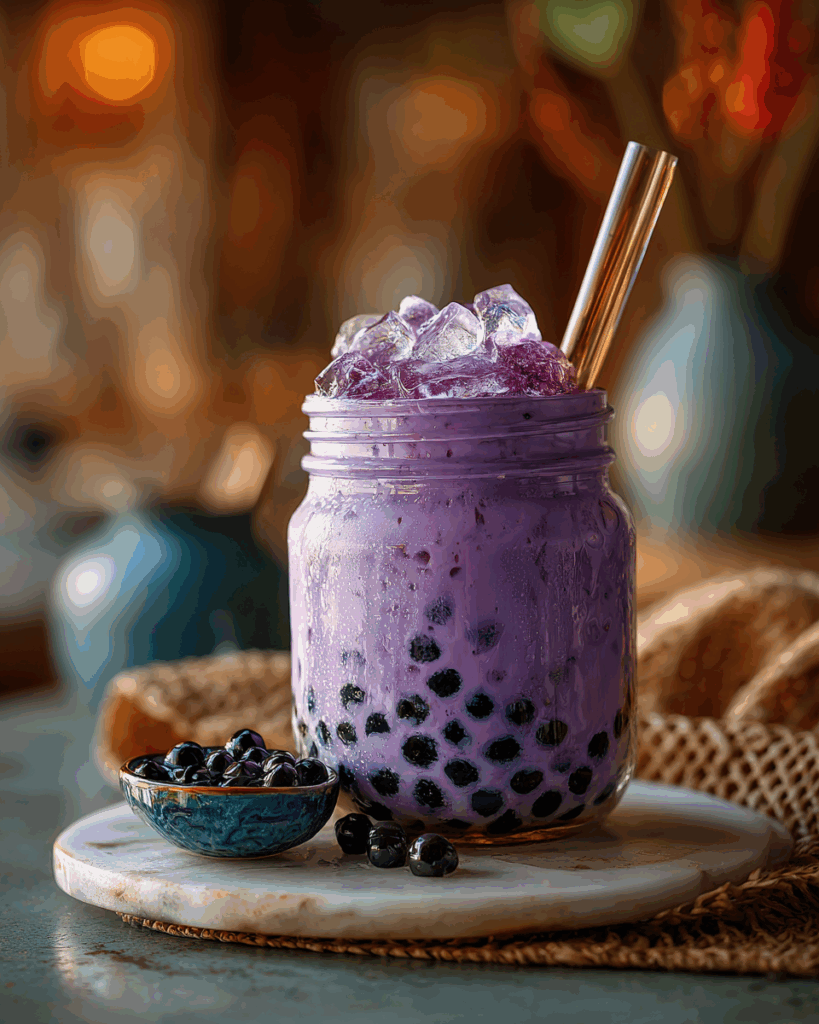
Even though this drink is quite easy to prepare, there are a few common mistakes that can affect the result. Knowing what to avoid will help you make a drink that’s consistently smooth, flavorful, and visually appealing every time you make it.
The first mistake many people make is using water that’s too hot when dissolving the taro powder. Hot water can cause the powder to clump or form a grainy texture. It’s best to stick with warm water, just enough to help everything mix evenly. This small adjustment makes a big difference in creating a silky drink.
Another issue is undercooking or overcooking the tapioca pearls. If you remove them from the heat too early, the center stays hard, and the texture feels unpleasant. Overcooked pearls, on the other hand, can become mushy. The key is to follow the timing closely and allow them to rest in hot water after cooking. That’s what gives them that perfect chewy texture that people love.
A common beginner mistake is adding too much sugar or condensed milk. The beauty of this drink lies in its balance. You want to taste the natural flavor of taro, which is slightly nutty and earthy. Too much sugar can overpower that gentle flavor and make the drink overly sweet. It’s better to start with a little less and add more later if needed.
Some people also forget to stir the taro mixture thoroughly before pouring it over ice. If the powder settles at the bottom, the drink becomes uneven, with stronger flavors in one sip and weaker ones in another. A simple stir before assembling ensures everything blends perfectly.
Another common mistake is using old or stale taro powder. Like any ingredient, freshness matters. Over time, taro powder can lose its aroma and color, leading to a dull-looking drink. Always store your powder in a cool, dry place in an airtight container, away from sunlight or moisture. If you notice the color fading or a change in smell, it’s time to replace it.
Finally, don’t forget presentation. Bubble tea is as much about the look as it is about taste. Using a clear glass lets you appreciate the beautiful purple hue and the floating pearls. It adds to the overall experience and makes every serving feel special, even if it’s just for yourself.
Learning from these small mistakes makes a huge difference in creating a drink that feels professional and comforting. Each time you make it, you’ll get a little better, finding your own rhythm and style in the process.
Cultural or Historical Background
The history behind this drink is as fascinating as its taste. While it’s now a global favorite, the roots of this purple, creamy beverage trace back to Asia, where both taro and tapioca have been staples for centuries. Taro, a tropical root vegetable, has long been used in traditional desserts and drinks across Southeast Asia, particularly in Thailand, Taiwan, and the Philippines. Its naturally starchy texture and subtle sweetness make it perfect for blending into smooth, comforting drinks.
The modern version of bubble tea as we know it began in Taiwan in the 1980s. Street vendors started experimenting with adding cooked tapioca pearls to sweetened milk teas, and soon, it became a craze. The combination of the chewy pearls and creamy tea was something entirely new at the time. It was playful and fun, and it quickly spread throughout Asia and beyond.
When taro was introduced to this concept, the result was magical. The natural purple color of the root gave the drink a stunning visual appeal, and its nutty, sweet taste blended perfectly with milk and sugar. This version soon gained popularity, becoming one of the most iconic and recognizable bubble tea flavors around the world.
In Thailand, where creamy drinks and colorful desserts are part of everyday life, taro found a special place. It’s used in sweets, puddings, and drinks that often symbolize comfort and hospitality. The drink fits right into that tradition, combining the familiar flavors of taro with the fun, chewy texture of pearls. It represents a mix of cultures, blending Taiwanese creativity with Southeast Asian flavor traditions.
In the United States, the drink became especially popular among younger generations who loved its look and taste. Cafés and bubble tea shops began appearing in major cities, offering endless variations of this drink. It became more than just a beverage, it turned into a lifestyle trend and a symbol of cultural connection between East and West.
Even today, this drink continues to evolve. People experiment with new ingredients, plant-based milks, and even natural colorings to create fresh takes on the classic recipe. What started as a street food item has now become a global favorite enjoyed by millions, reminding us of how food and drink can connect people across cultures and generations.
Serving Suggestions
The beauty of this drink is that it can fit into almost any moment of your day. Whether it’s an afternoon pick-me-up, a sweet dessert after dinner, or something special to enjoy with friends, this drink has a way of turning simple moments into something memorable. The creamy texture, the colorful pearls, and the soft, nutty flavor make it a true comfort beverage.
One of the best ways to serve this drink is chilled in a tall, clear glass. The contrast between the pale purple drink and the dark tapioca pearls at the bottom makes it visually stunning. If you want to add an extra touch of style, drizzle a little condensed milk down the inside of the glass before pouring the drink in. It creates gentle swirls that look beautiful and make each sip slightly richer.
For parties or small gatherings, you can set up a small bubble tea station. Prepare the milk mixture in advance, keep the pearls warm in syrup, and let everyone assemble their own drinks. Provide different toppings like grass jelly, coconut jelly, or even whipped cream for variety. It turns a simple beverage into an interactive treat that guests always enjoy. The experience of scooping pearls, choosing flavors, and shaking up their drinks makes it fun and personal.
If you enjoy food pairing, this drink goes wonderfully with light snacks or desserts. Soft pastries, sponge cakes, or even a small bowl of fruit complement the creamy sweetness without overpowering it. In Thai cuisine, it’s often enjoyed alongside sweet sticky rice or small coconut desserts, creating a balance between chewy and creamy textures. A chilled glass also pairs nicely with spicy or salty dishes, helping to cool the palate.
In colder months, serving the drink warm is another lovely option. Pour it into a heatproof mug, skip the ice, and let the creamy taro flavor comfort you like a cozy latte. The warmth brings out the deeper, nuttier notes of the root, making it especially satisfying on a rainy evening.
For a touch of creativity, experiment with presentation. Layering colors, like adding a small amount of matcha milk at the top or sprinkling a bit of crushed taro or coconut flakes, adds texture and visual interest. The drink can easily go from casual to elegant depending on how you serve it. Whether you enjoy it solo or share it with friends, it’s one of those small joys that feels special every single time.
When people look for drinks like this one, they often want to learn more about its variations, ingredients, and origins. Here are some related ideas and questions that often come up, which can help you explore more about this beautiful drink.
Many people search for taro powder, since it’s the key ingredient that gives the drink its flavor and color. Taro powder comes in many types, some sweetened and some natural. The natural versions usually have a more authentic flavor and are perfect if you prefer to control sweetness yourself. They dissolve best in warm water and give the drink that signature pastel purple tone.
Another popular search is for a taro milk tea boba recipe, which covers all sorts of homemade methods. Some recipes include a tea base for a more traditional bubble tea taste, while others rely only on milk and taro for a creamier texture. The choice depends on personal taste, but both versions are delicious in their own way.
People also want to know about fresh taro milk tea, which uses real taro root instead of powder. This version is thicker, more filling, and has a slightly earthy taste. Preparing it takes a little more time, but the flavor rewards are worth it. You simply steam or boil fresh taro, blend it with milk and sugar, and strain it until smooth. The result feels wholesome and comforting, with a texture that’s different from powder-based versions.
Another common question is, where is taro milk tea from? As we’ve seen, it began in Taiwan but quickly spread across Asia before reaching cafés in the West. It’s now a beloved drink in many cultures, each giving it their own twist. For instance, in Thailand, it might be sweeter and paired with coconut milk, while in Japan, it might lean toward subtle, earthy notes.
Many also wonder, what does taro milk tea taste like? The answer often surprises people. It’s not overly sweet or floral but gently nutty with hints of vanilla and butter. The flavor is unique yet comforting, which is why it wins people over after the first sip. When combined with the chewy pearls, it becomes a balanced treat, part drink and part dessert.
And finally, people often ask, is taro milk tea sweet? The sweetness depends on how it’s made. With condensed milk or added sugar, it becomes richer and dessert-like. But you can easily make it lighter with just milk and a small amount of sweetener. That flexibility is one of the reasons it’s so popular. You can make it your own, adjusting the taste and texture to suit your mood or the season.
Conclusion
Making this drink at home is more than just following a recipe, it’s about slowing down, enjoying the process, and creating something with your hands that feels joyful and satisfying. Every step, from cooking the pearls to mixing the taro milk, adds to the experience. It’s not just about the end result, it’s about the small moments along the way the aroma, the color, the first sip.
This drink has become a symbol of connection between cultures, bringing together traditional Asian flavors and modern creativity. It’s a reminder that food and drink are stories we share, carrying memories, emotions, and a sense of comfort. Whether you first tasted it in a busy café or made it at home for the first time, that memory stays with you.
If you’ve followed this recipe and learned a few new tricks, you now have everything you need to make your own version anytime you want. The more you make it, the more you’ll find small ways to make it even better maybe a touch less sugar, a splash of coconut milk, or even a different type of pearl. Each variation becomes uniquely yours.
So the next time you crave something sweet, creamy, and soothing, skip the store and make it yourself. You’ll find that creating it from scratch brings its own kind of happiness. And when you share it with someone, it feels even more special. It’s a simple drink, but it carries a lot of heart. Every glass is a little celebration of flavor, comfort, and creativity.
FAQ About Taro Milk Tea Boba
What is the nicest flavor of boba?
There are so many bubble tea flavors out there, and everyone has their own favorite. Some people love classic milk tea, others prefer fruity ones like mango or strawberry. But for many, the nicest flavor of boba is the taro version. There’s something about Taro Milk Tea Boba that stands out from the rest. Its creamy texture, soothing taste, and gentle sweetness make it feel timeless and comforting.
The nicest flavor often depends on mood. When you want something cozy, taro hits the spot. It’s smooth and calming, perfect for quiet moments or late-night cravings. On the other hand, if you’re in the mood for something bright and refreshing, fruit-based teas might be more appealing. But taro always feels special because it bridges the gap between dessert and drink.
What is the flavor of taro?
The flavor of taro is hard to describe until you’ve tried it, but once you do, you’ll never forget it. Taro has a gentle sweetness that’s both nutty and creamy, almost like a mix between vanilla and sweet potato. When blended into milk tea, it becomes smooth, mellow, and slightly buttery. That’s what makes Taro Milk Tea Boba so special it’s flavorful but not overpowering, sweet but not too sugary.
Some people say taro reminds them of cookies or white chocolate, while others find it closer to almond or chestnut. The taste can vary slightly depending on how it’s prepared. Fresh taro root tends to have a more earthy note, while taro powder gives a smoother, sweeter flavor that blends easily with milk.
Is taro milk boba healthy?
Whether Taro Milk Tea Boba is healthy depends on how you make it and how often you drink it. Like most treats, it’s best enjoyed in moderation. The drink can be made lighter and more nutritious by choosing the right ingredients and controlling the sugar content. Taro itself is a good starting point since it’s a natural root vegetable packed with fiber, vitamins, and minerals. It provides slow-releasing energy and is gentle on the stomach.
When making Taro Milk Tea Boba, using fresh taro or unsweetened taro powder can make a big difference. These options are more natural and contain fewer additives than pre-mixed powders. You can sweeten the drink with honey, maple syrup, or natural cane sugar instead of refined sugar for a healthier touch. If you’re watching calories or dairy intake, try oat or almond milk. They keep the drink creamy without making it too heavy.
What is in Taro Milk Tea Boba?
Taro Milk Tea Boba is made from a few simple ingredients that come together to create a creamy, flavorful, and beautiful drink. The main components are taro powder or fresh taro root, milk, sugar or condensed milk, and chewy tapioca pearls. Some versions also include tea, usually black or jasmine, which adds a deeper flavor and a bit of contrast to the sweetness of the taro. The pearls, also known as boba, are small balls made from tapioca starch that are cooked until soft and chewy.
When you combine these elements, you get the classic Taro Milk Tea Boba that so many people love. The taro gives the drink its signature lavender color and a nutty, slightly vanilla-like flavor. The milk adds creaminess, and the pearls make every sip fun and satisfying. Some people like to add a drizzle of syrup or whipped cream on top, but the traditional version keeps it simple and smooth.
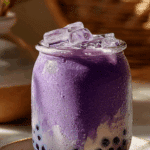
Taro Milk Tea Boba
- Prep Time: 10 minutes
- Cook Time: 30 minutes
- Total Time: 40 minutes
- Yield: 2 servings 1x
- Category: Beverage
- Method: Boiling and Mixing
- Cuisine: Thai / Taiwanese Fusion
- Diet: Vegetarian
Description
This creamy and colorful Taro Milk Tea Boba combines the rich, nutty flavor of taro with the smoothness of milk and the chewy texture of tapioca pearls. Perfectly sweet, refreshing, and fun to drink, it’s a beloved bubble tea recipe that’s easy to make at home.
Ingredients
- 70 ml warm water (around 120–140°F / 50–60°C)
- 12 g taro powder
- 20 ml sweetened condensed milk
- 12 g natural cane sugar
- 80 ml fresh milk
- Ice, as needed (crushed or cubes)
- 60 g uncooked tapioca pearls
- 1 liter water
- 25 g natural cane sugar (for pearls)
Instructions
- Bring 1 liter of water to a rolling boil over high heat. Slowly add the uncooked tapioca pearls, stirring gently to prevent clumping.
- Reduce the heat to medium and cook for 20–30 minutes, stirring occasionally, especially near the end to prevent sticking.
- Turn off the heat, cover the pot, and let the pearls sit in the hot water for 30 minutes to finish cooking.
- Drain the cooked pearls and rinse under cold running water to remove excess starch. Transfer to a bowl, mix with natural cane sugar, and let cool to room temperature.
- In a separate bowl, dissolve taro powder in warm water, stirring until smooth and free of clumps.
- Add condensed milk, natural cane sugar, and fresh milk to the taro mixture. Stir until well combined and creamy.
- Fill a tall serving glass with ice cubes. Pour in the prepared taro drink and top with the sweetened tapioca pearls.
- Stir lightly, insert a wide straw, and enjoy your homemade Taro Milk Tea Boba immediately.
Notes
- Use warm water, not boiling, to dissolve the taro powder for a smooth texture.
- Cook tapioca pearls according to the package instructions if timing differs.
- Coat cooked pearls in sugar or syrup to prevent them from sticking together.
- For a vegan version, use coconut milk or oat milk instead of dairy milk.
- Adjust sweetness by adding more or less condensed milk to taste.
Nutrition
- Serving Size: 1 glass (250 ml)
- Calories: 280
- Sugar: 32 g
- Sodium: 90 mg
- Fat: 6 g
- Saturated Fat: 3.5 g
- Unsaturated Fat: 2 g
- Trans Fat: 0 g
- Carbohydrates: 52 g
- Fiber: 1 g
- Protein: 5 g
- Cholesterol: 18 mg
Keywords: Taro Milk Tea Boba, taro bubble tea, homemade bubble tea, Thai drink, milk tea recipe, boba tea

